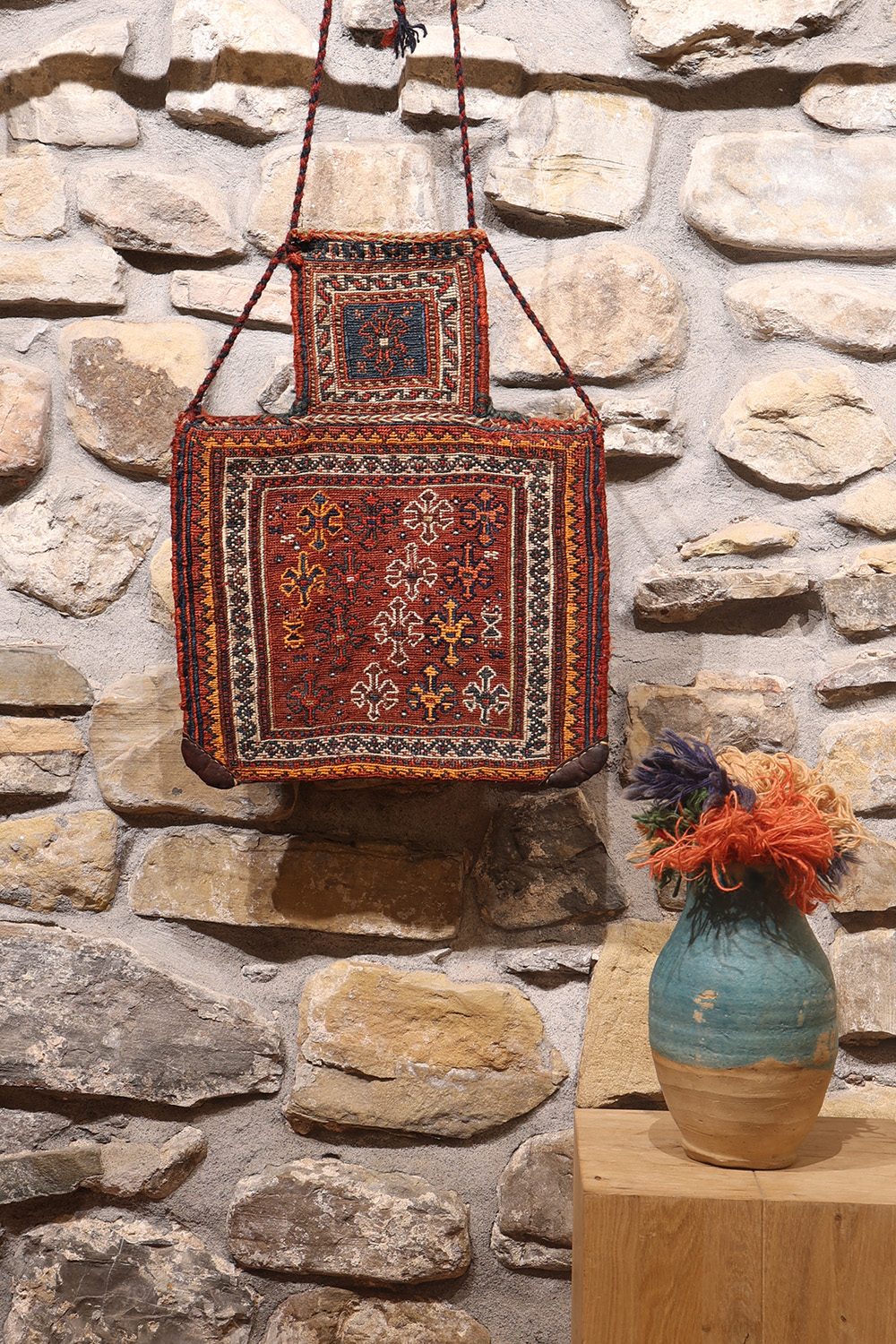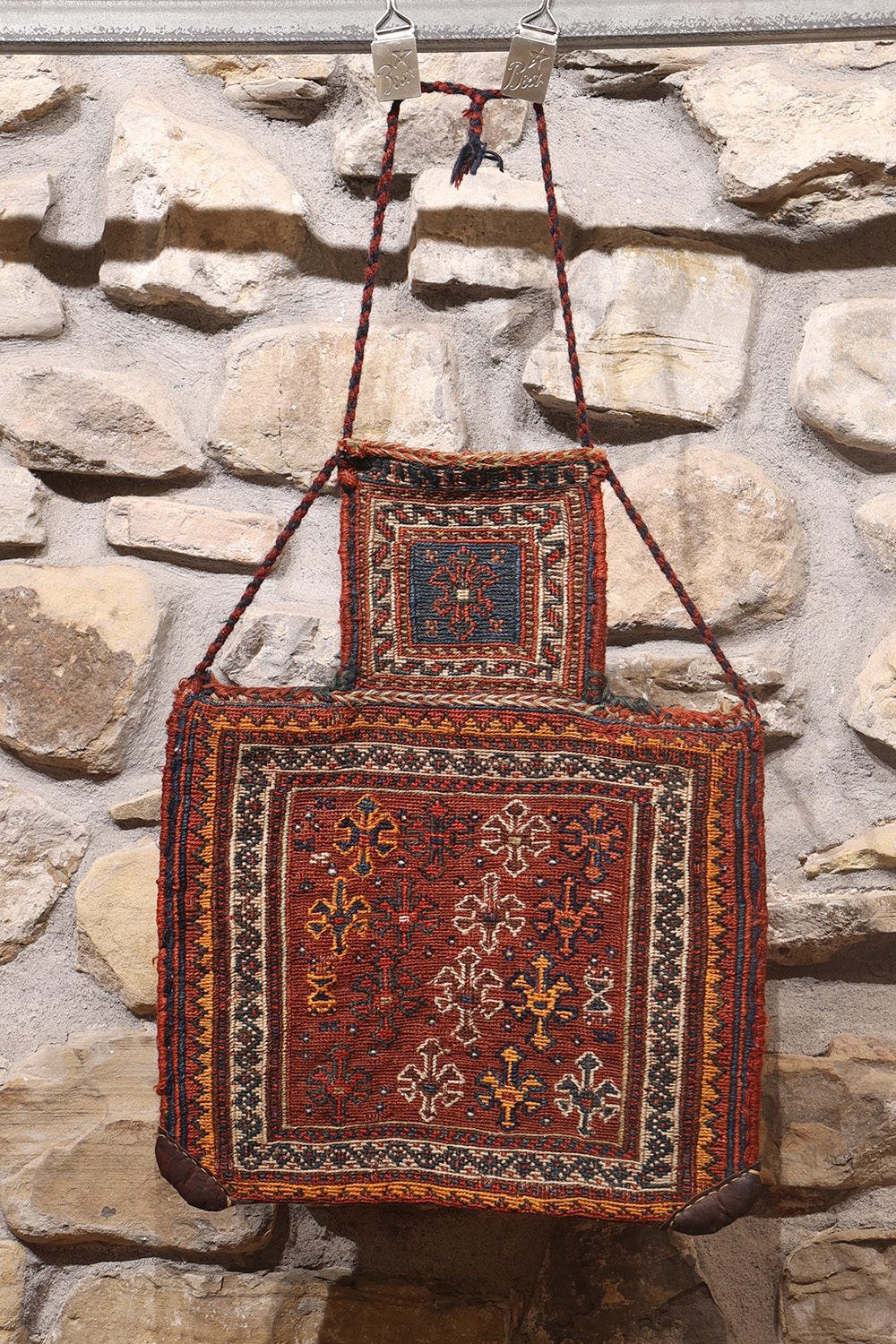350.00 €
A superb antique namakdan or salt bag woven with the soumak technique. All the dyes are natural, with a particularly beautiful indigo blue. The lower corners are probably worn, so at one point, the owner of the bag decided to protect them with a leather piece. The back of this beautiful salt back is woven in kilim and left plain, except for the “neck”, which is decorated with a lot of detail in the soumak technique like the front part. A lovely piece for a tribal collector.
Material: 100% hand-spun sheep wool and leather
Size: 53×43 cms
Origin: Arabic, Iran
Date of weaving: 1900s
Namakdan is a container for preserving and carrying salt. This container is mostly wover for shepherds to carry the salt needed for the flocks they take to mountains and plains. The shepher carries on his back the salt container full of salt, and occasionally pours a handful on a rock so that his flock can lick it.
In addition, the namakdan has its household uses. Most tribes store their salt in this bags andn hang the inside the tent near the cooking space. A namakdan, has always the same shape, that is, it consists of a main body and a neck.
A namakdan is an item made for a specific person, a child or some loved one travelling far over the hill and valleys. The namakdan thus acts as a token of a woman´s love, and carries, as it were, part of this love for the shepher´s lonely hours.
Arab nomads of Fars Province, Iran, are descended from certain Arab tribes of Najd, Yammaneh and Omman who migrated in the 7th and 8th centuries following the Arab contest (640 A.D.) and the advent of Islam. They speak a corruption of Arabic and Persian.
Althoug Arab nomad piled production encompasses a great and astonishing variety of designs, with field patterns much more varied than other tribes of Fars, the Arab weaver´s adherance to a generally dark and sober palette has denied them the artistic recognition they deserve.
1 in stock
Additional information
| Weight | 1.2 kg |
|---|
Subscribe and receive the lastest news






